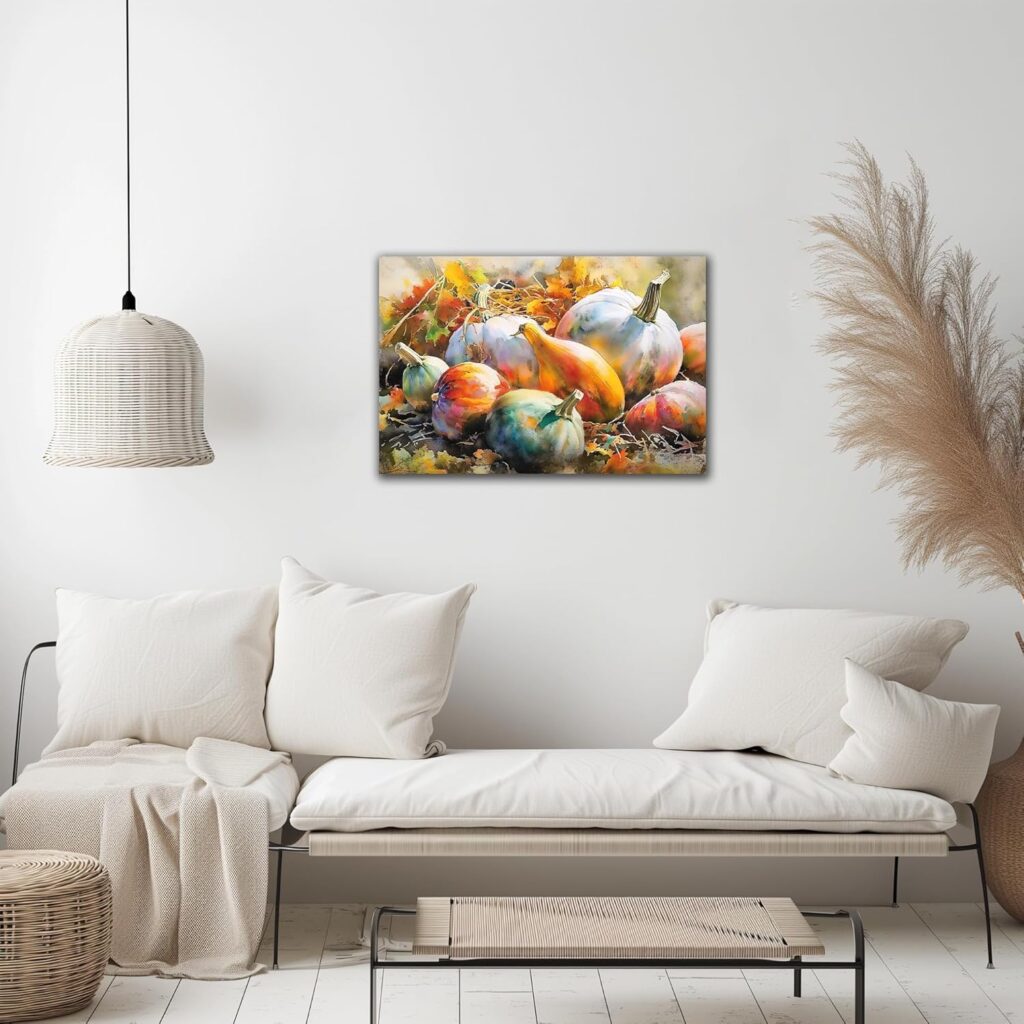Fall Watercolor Journeys ; As the air turns crisp and the leaves transform into a vibrant tapestry of reds, oranges, and yellows, fall beckons us to reflect, create, and immerse ourselves in its beauty. For artists, particularly watercolorists, autumn is a season brimming with inspiration. The gentle flow of watercolor mimics the organic changes in nature, making it an ideal medium to capture the essence of this transitional time. In this article, we will explore 17 enchanting fall watercolor journeys that invite you to express the magic of the season.To deepen the composition, consider layering your leaf paintings over a faint background wash that resembles the forest floor or a sidewalk. Let fallen leaves appear mid-tumble or collect them in bunches to convey the sense of seasonal transition. Experiment with negative space by painting around the leaves to make them pop. Splattering paint around your leaves can mimic scattered foliage and dynamic movement. For a touch of whimsy, try adding metallic watercolors to create shimmery veins or dew-kissed effects.
17 Inspiring Fall Watercolor Journeys
1. Autumn Leaves
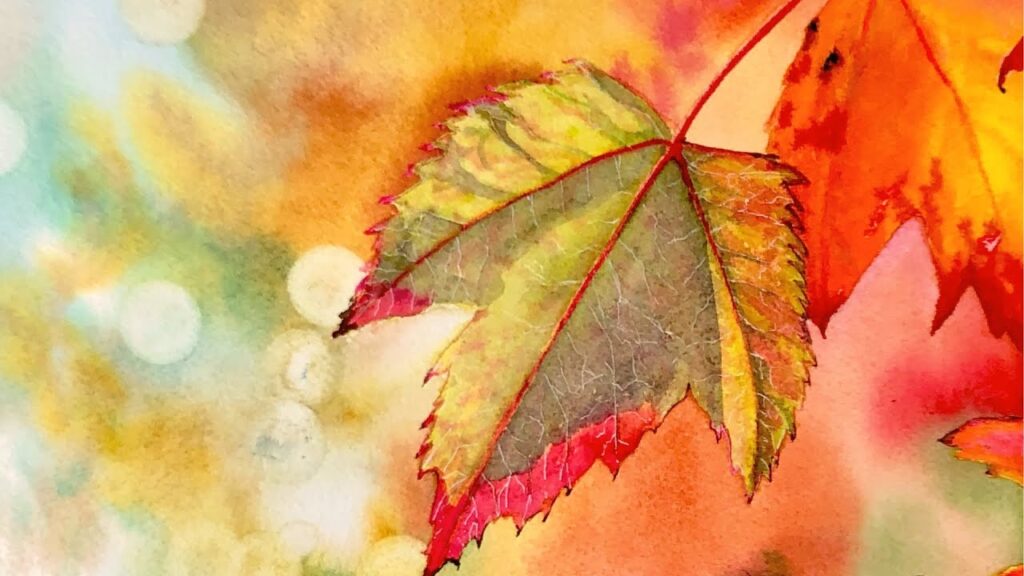
To deepen the composition, consider layering your leaf paintings over a faint background wash that resembles the forest floor or a sidewalk. Let fallen leaves appear mid-tumble or collect them in bunches to convey the sense of seasonal transition. Experiment with negative space by painting around the leaves to make them pop. Splattering paint around your leaves can mimic scattered foliage and dynamic movement. For a touch of whimsy, try adding metallic watercolors to create shimmery veins or dew-kissed effects.
One of the most iconic symbols of fall is the changing leaves. To capture their beauty:
- Technique: Use wet-on-wet to blend colors while the paper is still wet, creating natural gradients. Experiment with different leaf shapes and sizes.
- Tip: Incorporate salt or alcohol to create texture and mimic the speckles of autumn leaves.
2. Harvest Scenes

Add visual storytelling to your harvest compositions by painting tools like baskets, barrels, or wheelbarrows. Including animals such as turkeys or farm dogs can add personality and life. Capture the interaction of light and shadow on your produce to give it volume and warmth. Try arranging your harvest as a still life on a tablecloth for a cozy, homestyle atmosphere. Complement the richness of your subject matter with a textured background that hints at soil or straw.
Celebrate the bounty of the season by painting harvest scenes. Think pumpkins, cornucopias, and apple orchards.
- Composition: Focus on layering and arrangement. Use darker shades for foreground elements to create depth.
- Palette: Emphasize rich oranges, earthy browns, and hints of green.
3. Cozy Sweaters and Scarf Patterns

Take your textile studies further by experimenting with fabric patterns like houndstooth, argyle, or Fair Isle. Include overlapping garments to explore how shadows fall between folds and layers. Use masking fluid to protect lighter highlights and create crisp, woven designs. Consider painting hands holding mugs or wrapping up in scarves to add a narrative element. A limited, muted palette can enhance the softness and coziness of your textile-themed painting.
Capture the comfort of wearing sweaters and scarves.
- Textile Techniques: Use fine brushes to create intricate patterns. Layer colors to represent folds and textures in the fabric.
- Step-by-Step: Start with a light wash for the base color, then add layers for detailing.
4. Scenic Autumn Landscapes

Expand your landscapes by including elements like wooden fences, cabins, or grazing animals in distant fields. Layering multiple ridges of trees and hills can enhance depth and mimic a panoramic view. Use warm glazes to exaggerate the golden hour light that often bathes fall scenes. Add fallen leaves along winding paths to draw the viewer’s eye inward. Try capturing the quiet stillness of a foggy forest or the gentle breeze rustling through golden canopies.
Paint sweeping landscapes adorned with fall foliage.
- Perspective: Use atmospheric perspective by painting distant trees in lighter, less saturated colors to create depth.
- Technique: A dry brush technique can add texture to grass and tree bark.
5. Seasonal Flora

Take a botanical approach by isolating individual flowers and studying their structure in a scientific illustration style. Add fallen petals or curling leaves to show the aging process and passage of time. Combine multiple plant species in one painting to create a bouquet of fall textures. Enhance realism by paying attention to stem thickness, leaf veins, and petal irregularities. Consider layering transparent glazes to capture the delicate translucency of petals in the sunlight.
Fall isn’t just about leaves; flowers like chrysanthemums and asters add color.
- Detailing: Focus on petal shapes and layering. Use a wet-on-dry technique to achieve crisp lines for petals.
- Color Mixing: Explore purples, yellows, and reds to highlight fall flowers.
6. Misty Mornings

Expand your misty scenes with subtle silhouettes of distant buildings, trees, or people to suggest depth and mystery. Layer light washes of gray and blue to gradually build up the fog effect. Incorporate reflections in wet ground or puddles to enhance realism. Try framing a quiet scene such as a bench in an empty park or a winding path leading into the fog. Use soft brushwork to blur outlines and evoke a hushed, tranquil mood.
Capture the serene beauty of foggy autumn mornings.
- Color Choices: Use muted tones to convey fog. Blues, grays, and soft greens work well.
- Blending: Create soft edges to depict the misty atmosphere, emphasizing light and shadow.
7. Fall Wildlife
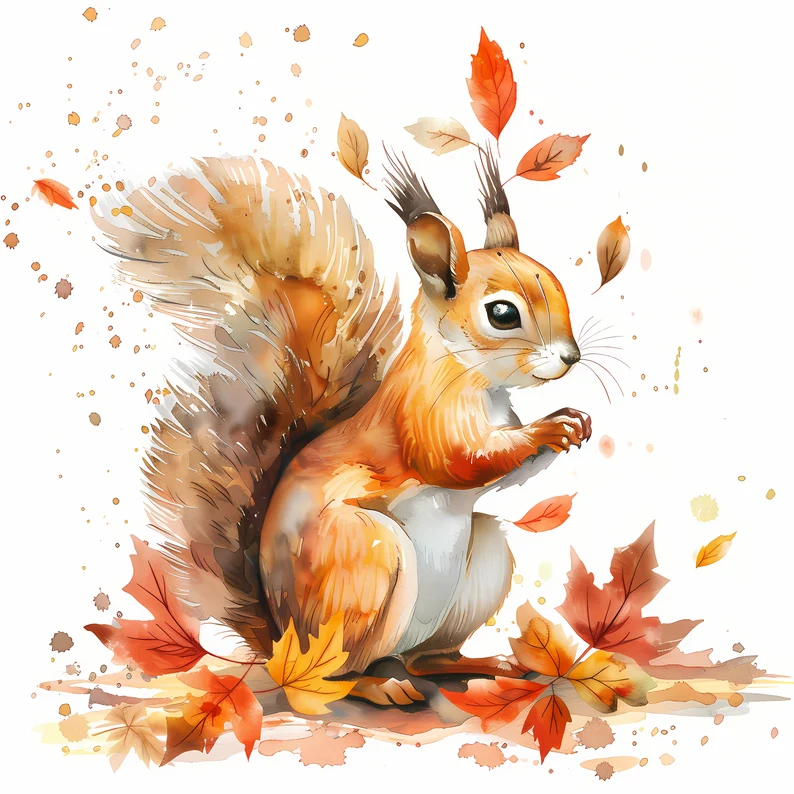
Expand on animal themes by exploring close-up portraits, focusing on eyes and fur texture. Add a story by painting an animal in its environment, such as a fox nestled in fallen leaves or squirrels gathering food. Include footprints or disturbed grass to suggest recent movement. Experiment with warm-toned backgrounds to unify the piece and contrast with natural fur colors. Capture moments of curiosity or alertness to express personality and emotion in your subjects.
Paint the animals that come alive during the fall season.
- Dynamic Poses: Focus on movement by capturing animals in action, such as deer or birds taking flight.
- Detailing: Pay attention to textures in fur and feathers, using dry brush techniques for realism.
8. Halloween Vibes
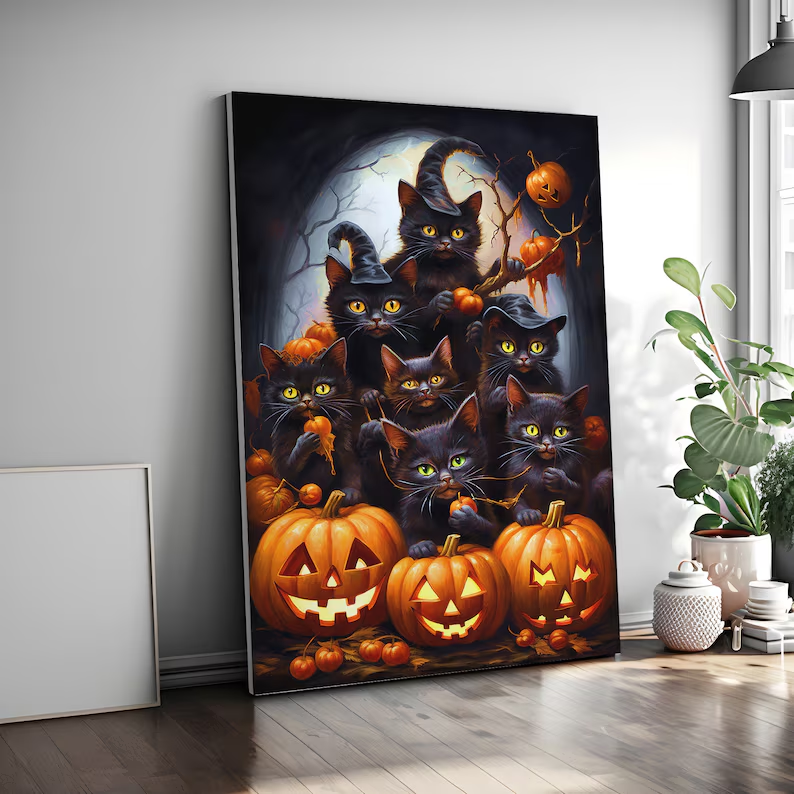
Add layers of atmosphere by painting night skies filled with stars, clouds, or a glowing moon. Use silhouettes for haunted houses, bats, or twisted trees to heighten the spookiness. Play with opacity to create ghostly, translucent effects. Consider combining spooky imagery with vibrant fall elements like pumpkins and autumn leaves for a playful balance. Enhance the theme by using a darker paper or painting a vignette to create a mysterious glow around your subjects.
Embrace the whimsical side of fall with Halloween-themed art.
- Color Palette: Use dark purples, greens, and blacks to evoke a spooky atmosphere.
- Composition Ideas: Paint haunted houses, pumpkins, or playful ghosts.
9. Thanksgiving Still Life
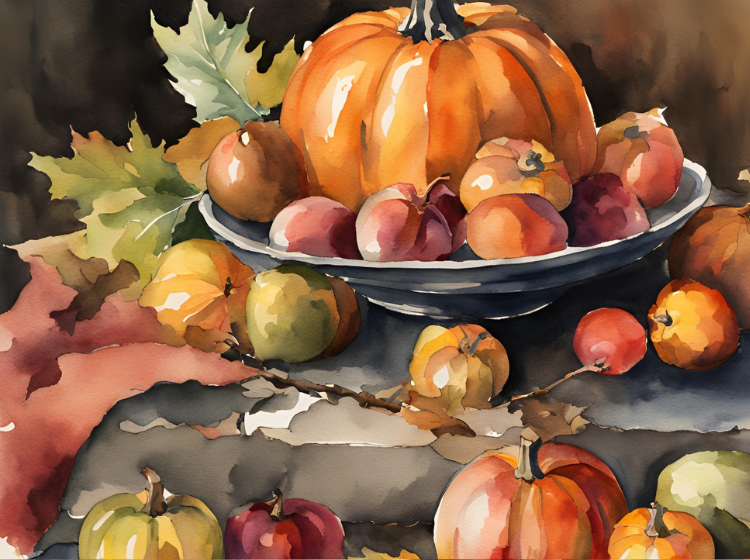
Bring warmth to your Thanksgiving scenes with flickering candlelight or rustic wood backgrounds. Include heirloom items like antique silverware or embroidered napkins to add a personal, historical feel. Position objects at various heights to create visual interest and a sense of abundance. Use warm, earthy tones to unify the composition and emphasize the theme of togetherness. A touch of gold or copper metallic watercolor can add elegance and warmth to your festive scenes.
Create warm, inviting compositions that celebrate the harvest.
- Arrangement: Gather elements like fruits, vegetables, and festive decor for your still life.
- Layering Technique: Use glazes to build depth and vibrancy in your paintings.
10. Scenic Trails and Pathways

Enhance your trails by incorporating fallen leaves in various stages of decay to add realism. Use color temperature shifts along the path to suggest light filtering through trees. Add focal points like a wooden bench, a lantern, or a figure in the distance to create narrative depth. Surround the path with dense textures of grass, ferns, and bark to contrast with the smoother trail. Consider including animal tracks or shadows to evoke a sense of life passing through.
Illustrate the beauty of winding trails surrounded by autumn foliage.
- Composition Tips: Use leading lines to draw the viewer’s eye into the painting. Experiment with foreground elements to create interest.
- Technique: Utilize both wet-on-wet and dry brush techniques to depict foliage and pathways.
11. Sunset and Sunrise Skies
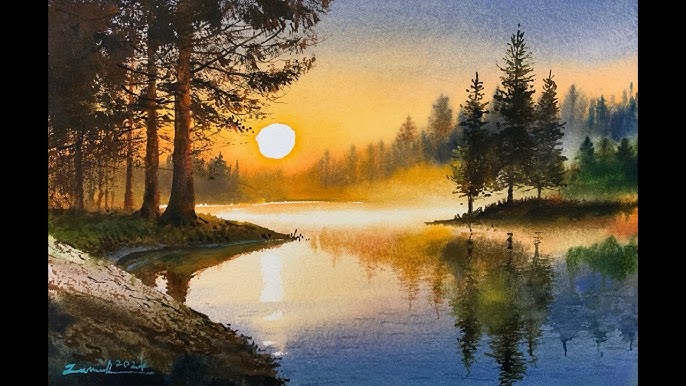
Develop your sky scenes further by including tree silhouettes, rooftops, or hills to ground the horizon. Add birds in flight or drifting leaves to emphasize the changing season. Introduce reflections in lakes or wet roads to echo the colors of the sky. Try glazing layers of color to build a glowing effect that mimics real sunset light. Play with composition by placing the sun off-center or behind clouds to create visual tension and interest.
The skies in fall can be breathtaking.
- Blending Techniques: Use horizontal strokes to create gradient skies. Experiment with mixing yellows, oranges, and purples for a dramatic effect.
- Reflections: Incorporate water reflections to enhance the beauty of your sky.
12. Watercolor Journaling
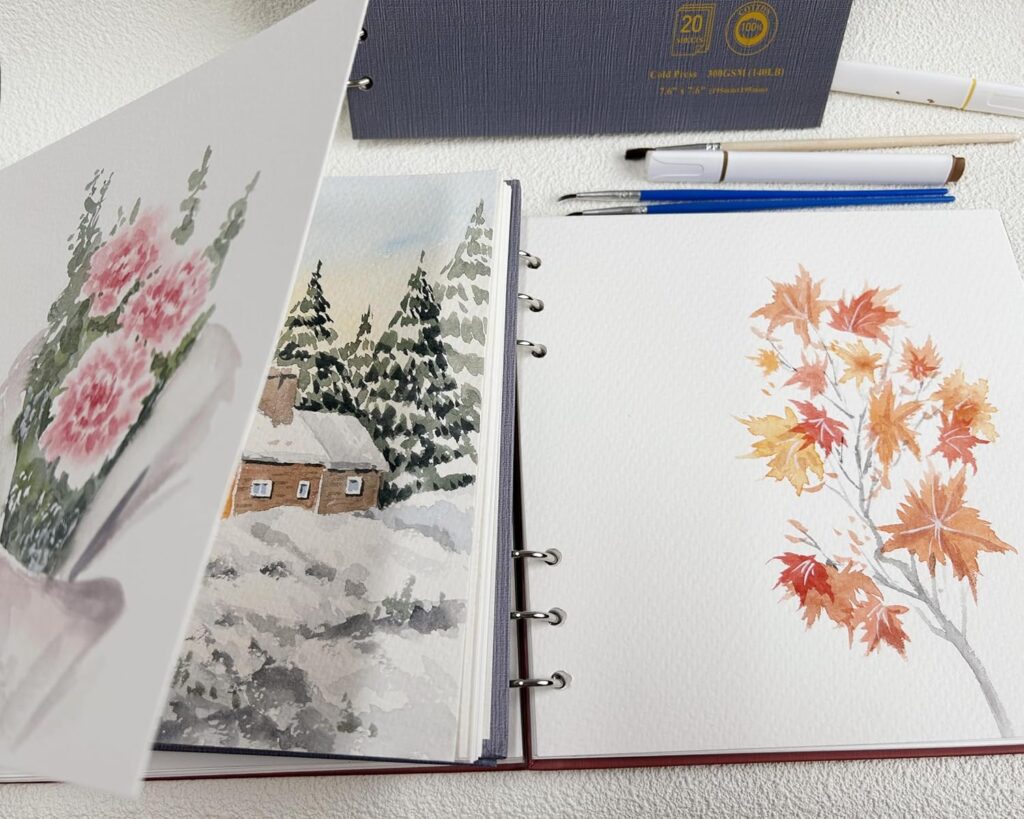
Expand your journaling pages with seasonal borders or motifs like acorns, boots, and flannel patterns. Use hand lettering to add inspiring quotes or date stamps to capture the moment. Create small watercolor swatches of your palette to track seasonal color inspiration. Sketch quick scenes from daily life, such as sipping tea or watching leaves fall from a window. Personal touches like ticket stubs or dried leaves taped in can blend art with memory-keeping.
Combine art and personal reflection through watercolor journaling.
- Tips: Document your thoughts and experiences of fall alongside your art.
- Layout Ideas: Create small vignettes of your favorite moments, such as a walk in the park or a cozy evening by the fire.
13. Abstract Fall Art
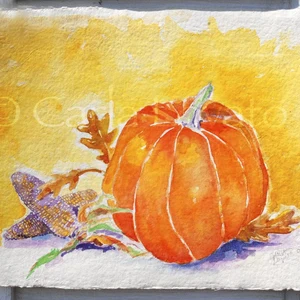
Include dancers, lanterns, or crowds to capture the energy of cultural festivals. Use quick, gestural brushstrokes to imply motion and activity. Create scenes lit by warm lanterns, bonfires, or fireworks for dynamic lighting. Highlight specific traditional costumes or foods to enrich the cultural narrative. Vary your composition styles—some scenes can be panoramic, others intimate—to reflect different aspects of the celebration.
Experiment with abstract representations of fall.
- Creative Freedom: Focus on colors and shapes rather than realistic depictions. Let intuition guide your brushstrokes.
- Layering Colors: Build depth by layering washes and exploring different techniques like splattering or pouring.
14. Celebrating Fall Festivals

Delve deeper into texture by painting baked pies, roasted vegetables, or frothy drinks with rich details. Use masking techniques to retain highlights and suggest glistening or reflective surfaces. Include hands or settings (like a cozy kitchen) to provide context and warmth. Surround your dish with fall props like cinnamon sticks, leaves, or flannel napkins for visual storytelling. Experiment with stylized illustration for a charming, recipe-book effect.
Capture the joy of local autumn festivals.
- Energy and Movement: Focus on lively scenes, using quick brush strokes to convey motion.
- Color Palette: Vibrant hues can evoke the festive atmosphere.
15. Seasonal Food and Drink

Add visual storytelling by painting processions, rituals, or decorations used in various autumn festivals. Use vibrant color schemes associated with specific traditions, such as marigold oranges for Día de los Muertos. Integrate text elements like traditional phrases or poetry alongside your artwork. Paint still life scenes of symbolic items like candles, altars, or traditional sweets. This approach can both educate and celebrate the diversity of fall customs.
Illustrate warm beverages and seasonal dishes.
- Textural Techniques: Use layering to create the illusion of steam rising from a mug or the texture of baked goods.
- Color Tips: Earthy tones for foods and bright colors for drinks can create inviting compositions.
16. Cultural Autumn Traditions

Add visual storytelling by painting processions, rituals, or decorations used in various autumn festivals. Use vibrant color schemes associated with specific traditions, such as marigold oranges for Día de los Muertos. Integrate text elements like traditional phrases or poetry alongside your artwork. Paint still life scenes of symbolic items like candles, altars, or traditional sweets. This approach can both educate and celebrate the diversity of fall customs.
Explore global traditions through watercolor.
- Diverse Inspiration: Paint scenes inspired by festivals like Diwali, Día de los Muertos, or Thanksgiving.
- Narrative Elements: Incorporate symbols and elements from each culture to tell a story.
17. Personal Reflection and Self-Expression

Dive deeper into emotional expression with visual metaphors like falling leaves to represent change or bare trees to symbolize letting go. Use color intuitively—bright if you’re feeling energized, or muted if you’re feeling introspective. Include symbols from your daily life such as your favorite mug, journal, or scarf. Let the piece evolve with your feelings, without worrying about perfect representation. These deeply personal paintings often become the most meaningful and rewarding.
Encourage personal expression through watercolor.
- Guided Prompts: Create art that reflects your feelings about the season. Consider prompts like “What does fall mean to you?”
- Embrace Mistakes: Allow yourself to experiment and grow through each piece, focusing on the journey rather than perfection.
Conclusion
Autumn is a season that invites reflection, creativity, and exploration. By engaging in these 17 fall watercolor journeys, you can capture the rich tapestry of the season, expressing your emotions and experiences through art. Whether you’re a beginner or an experienced artist, there’s always something new to discover in watercolor painting.
So grab your brushes and paints, step outside to embrace the beauty of fall, and let the magic of the season flow onto your canvas. Happy painting!

